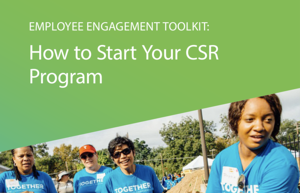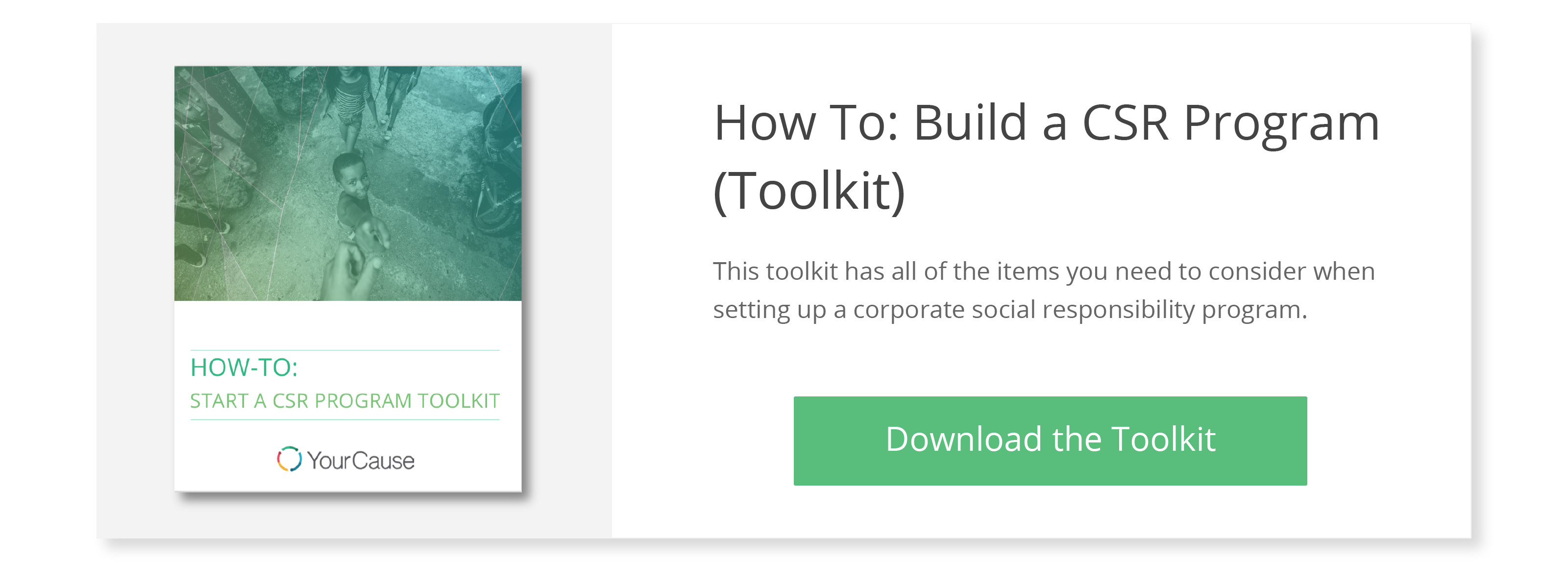Mission and Goals: The Foundation to Your CSR Program’s Success

Congratulations! Your company has decided to officially launch an employee engagement program. Everyone is excited – leadership, the employees, your team – but you are starting to feel the pressure of delivering a killer program and aren’t sure where to begin. Don’t worry, we have your back! The good news is is that an employee engagement program can be as simple or as complex as you want it to be. One is not better than the other. You just have to decide what is right for your company. Before you even get into the complexities of outlining the program elements, you need to fully understand your program’s mission and goals. Having these two, not so little, things determined will make a HUGE difference in your program’s success.
Defining your mission.
Understand the “why.” Yes, everyone has heard the Simon Sinek TedTalk and by now, you have heard it 1,000 times. But you would be surprised as to the number of companies that can not specifically define the “why” of their employee engagement program. So, start with your why. This will lead to a series of questions that need to be answered and used as the foundation for every decision you make when it comes to your company’s employee engagement program. Here are a few questions to ask your Executive team and yourself when outlining the “why”:
- Why is the company launching this program?
- Will it align with the company’s mission statement?
- What value or investment will we need to make (approximated) to ensure we are actually making an impact?
- Are we focused on social impact or simply on employee engagement?
- Are there organizations or types of organizations that we want to make a key pillar of our program? (Example: Solely focusing on education because our company’s core services are education tools/software.)
- Does our board or executive team have a vested interest in a particular charity type?
Our CSR Toolkit suggests more questions that could be helpful during this discussion. Don’t be surprised if the stakeholders’ varying answers lead to a little debate… Debate is good! But, at the end of the day, you will have built the founding principles of your program with clear expectations and an idea of the investment your company will make to see your employee engagement program succeed. Once all of these discovery questions are answered and your new mission is documented, make sure every strategic decision in the development of your employee engagement can be traced back to your program’s mission.
P.S.A. Remember, just as your company and employee-needs evolve, so will your program’s mission and goals. Keep in mind you are looking to answer the “why” for your current state… and that can change throughout the years. As you evaluate your program’s performance annually, you should review your program’s mission to make sure it is still a good fit.

Defining your goals.
Since everyone is already excited about the rollout of this new program you probably know who your key stakeholders are and the departments that will be interested in its success. It is in your best interest to gather from those stakeholders and departments what they think success looks like. No, they are not determining your program’s goals or defining what employee engagement success should be. However, the insight you gain will foster cross-departmental success metrics and partnerships that lead to the development of your internal champion network.
Here are a couple of examples of common cross-departmental goals we have seen:
Example 1:
Executive Team Goal: Provide data or insight into the company’s social impact that can be shared in a quarterly investor report.
Your Goal in Alignment: You are already going to have your goals defined for employee participation percentage, target dollars raised and desired employee volunteer hours annually for your company. Take the extra step in breaking that goal into quarters and define impact conversions with your key NPO partners. Your key NPO partners should be able to tell you what a dollar raised or the hours volunteered will do in supporting their mission. For example, $1 = 300 meals, 20 hours volunteered packing meals = 500 families feed. Now you have all the data points outlined and ready to calculate for your Executive team’s quarterly investor report.
Example 2:
Human Resources Goals: Provide data that can display engagement and illustrate the company’s culture to prospective employees.
Your Goal in Alignment: Again, you are already going to track employee participation percentage. Consider deepening that tracking into employee tenure or type. Looking at engagement percentages for new hires, tenured, full-time, and part-time employees is a great place to start when helping your HR department entice the top talent to come work for your organization. Since most people spend more time at work than with their families, they want to know that the culture is stellar. Displaying participation in social good throughout all of the employment journey is a great way for your HR department to illustrate it!
Phew, we know this seems like a lot of work to be done before even thinking about your program strategy, but trust us, it will be time well spent. Your mission and goals will be the building blocks for your program’s first year of success. While defining the mission and goals may not be as glamorous as building an internal champions program or as fun as kicking off your diversity and inclusion initiatives, they will set the stage and ensure your programs are ready to rise to the occasion when you do add more complexities. When the time does come to kick your programs up a notch, our CSR Toolkit has all the resources you will need to guide you through additional elements. But that’s for another time!


